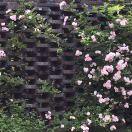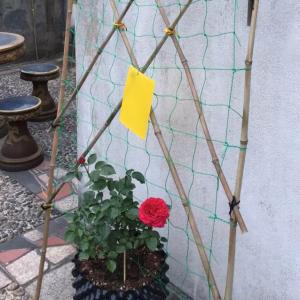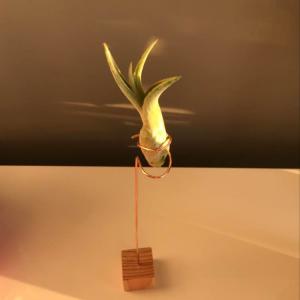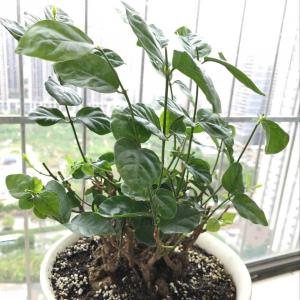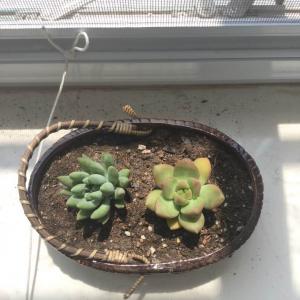文章
权问薇
2018年05月09日


叶脉装饰
各种叶子的形状都不同,做成叶脉饰品再好不过了
做起来也十分简单呢,小孩子都能做

1、准备
家里没有小苏打的可以用肥皂代替,洗衣皂、香皂都行
2、烧水、倒苏打粉
1000毫升水倒10克小苏打,或者10克肥皂,融化就是碱水啦
3、水开加入树叶
碱水烧开后,加上树叶,开小火,盖上盖子
4、煮好捞出
煮到水颜色变深就好了,可以捞出来了
5、捞出刷掉叶肉
捞出后用牙刷轻轻刷掉叶肉,不到2分钟就刷干净啦
6、压干
叶肉刷完,放在卫生纸上再盖一层卫生纸,压干
7、按个人喜好染色
压干后可以涂上自己喜欢的颜色
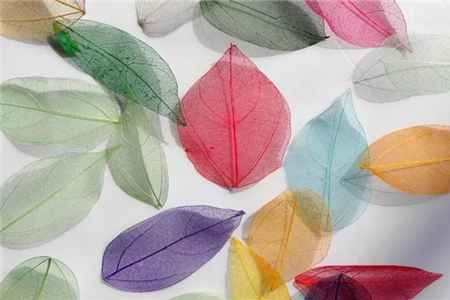
染好可以晾一下,一会儿就干了
这可以绑上穗子做书签,也可以扎成一束做叶脉花,插在香水瓶里发散香气,充当空气清新剂,既美观又实用
还能够做成叶脉风铃,剪出自己喜欢的形状,绑在线上,薄如羽翼的叶脉蝴蝶就能随风飘起~
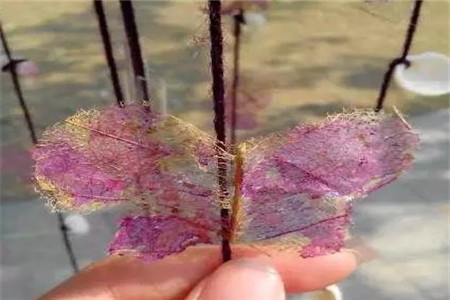
树叶做画
在树叶上涂满颜料,然后再白纸上按压10秒,就能收获一副“技术高超”的画啦
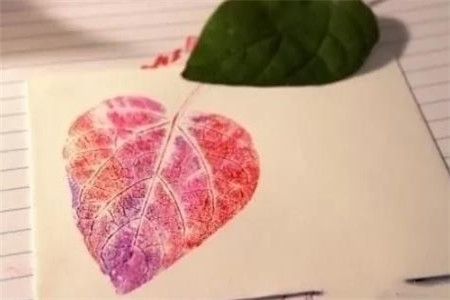
大一点的树叶可以涂更多的颜色,怎么样?人人都是艺术家!

让我们来看一下这位小“艺术家”的创作吧

嗯,经过妈妈的润色后,真的充满了艺术气息呢~

树叶装饰
有的花友就是喜欢叶子,觉得叶子百看不厌,另有一种感觉,那就可以试试把叶子直接做成房间装饰吧

相信大家都做过:把叶子夹在书里,做成标本

然后放到相框里,放在家里太衬气质了

不管是现代北欧风,还是复古中国风,都能hold住~

花花说的这些方法简单又实在。
0
0
文章
巴黎铁塔
2018年05月09日
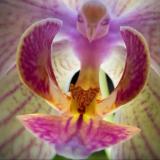

1、减少光照
原因:富贵竹在强光下曝晒时间过长,叶子上就会长出黄斑,整片叶子看起来就呈黄色,没有光泽。
解决方法:将富贵竹移到室内有散射光的地方,慢慢养护。
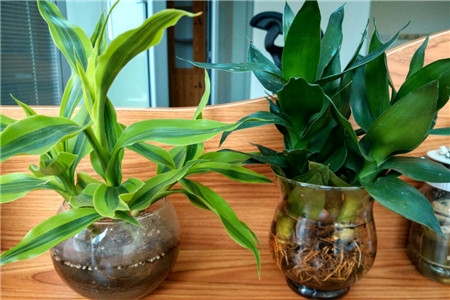
2、增加光照
原因:富贵竹长时间处于过于阴蔽的地方,没有足够的阳光进行光合作用,叶片无法合成养分,进而发黄。
解决方法:将它搬到阳光充足而不强烈的地方养护。
3、剪根重栽
原因:平时浇的水太多或是施的肥太多,就会对富贵竹的根部产生影响。轻则引起根部发黑,重则导致根系腐烂。根系受到伤害后会直接影响养分吸收的效率,导致叶片缺少营养,开始发黄。
解决方法:将富贵竹从水中或是土中取出,观察根须,用消过毒的剪子将黑、烂的根须剪掉。之后再往伤口处喷一些药剂进行杀菌,然后放到阴凉处晾干。等到药剂干掉以后,再用新的介质进行培养。
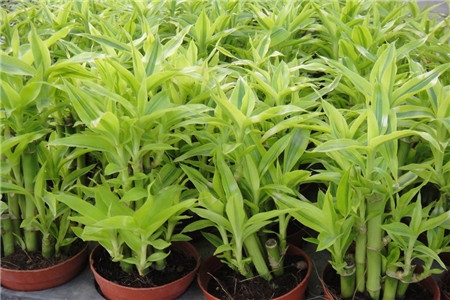
4、多浇些水
原因:水是富贵竹光合作用反应的原料,一旦缺水就会导致叶片它无法正产进行光合作用合成养分,从而发黄。
解决方法:多给富贵竹浇一些水,保证足够的水分供给。
5、补充肥料
原因:长时间不给富贵竹施肥,就会导致植株的能汲取到的养分不足,叶片没有养分就会发黄。
解决方法:给富贵竹追施一些肥料,但是不能施的太多,要薄肥勤施。

0
0
文章
巴黎铁塔
2018年05月09日


1、增加浇水
原因:水是发财树一系列生理反应的原料,长时间缺水会导致它部分生理功能瘫痪,从而使得叶片发黄。
解决方法:适量及时的为发财树浇水,保证盆土湿润。
2、减少浇水
原因:给发财树浇了太多的水,导致土壤中出现积水。植株的根部泡在水中,容易被泡烂,从而影响到了养分的汲取,导致叶片变黄。
解决方法:情况不是很严重的时候可以将花盆垫高放到通风处,让土壤中的水分挥发掉并减少浇水。情况比较严重的话要将发财树整个取出,剪掉被泡烂了的根系,再放到新的土壤中养殖。
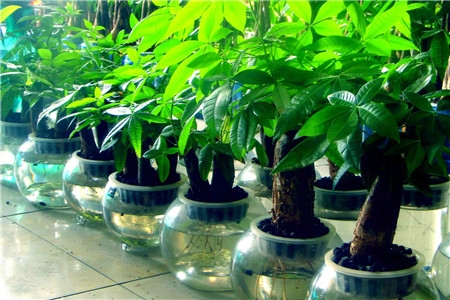
3、减少光照
原因:若是夏天的时候没有为发财树遮阴,让它长时间在强光下暴晒,它的叶子就会被灼伤,进而变黄。
解决方法:将发财树移动到光线明亮但不会被太阳直射到的地方养护。
4、补充肥料
原因:长时间不给发财树施肥也有可能导致它难以从土壤之中汲取到足够的养分,从而导致叶片发黄。
解决方法:为发财树使用一些肥料或是营养液,施加之前要注意将之稀释一下,以免浓度过高伤害到植株。

5、适量剪枝
原因:发财树长得太过于繁茂,叶片之间互相遮挡,导致每片叶子都难以接受到足够的光照,或者是因为叶片过多,根部汲取的养分难以供应所有的叶片正常生长,就有可能出现黄叶。
解决方法:及时修剪,将枝叶比较密集的地方剪疏,并剪掉瘦弱的发育不良的枝叶。
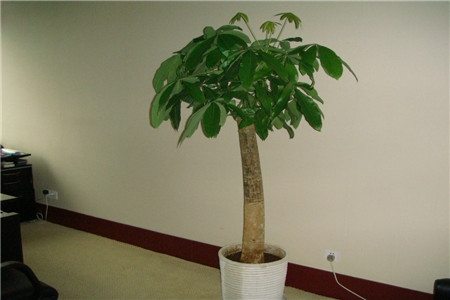
0
0
文章
Miss Chen
2018年05月08日

Description: This perennial orchid is 1–2½' tall and usually unbranched. The central stem is round in circumference, rather stout, and densely covered with hair. Three or more leaves alternate along this stem. These leaves are up to 6" long and 4" across; they are oval-ovate to ovate, smooth along their margins, and pubescent. Parallel veins are readily observable along the upper surface of each leaf. The base of each leaf clasps the stem. The color of the foliage can vary from dark green to yellowish green, depending on growing conditions and the maturity of the plant. The central stem terminates in 1 or 2 flowers. Each flower is held above the foliage on a long stalk that has a single leafy bract behind the flower. This bract resembles the leaves, but it is smaller in size and lanceolate in shape. Like other orchids, each flower has 3 petals and 3 sepals. However, because two of these sepals are fused together, there appears to be only 2 sepals.
The lower petal is in the shape of a slipper or a pouch with an opening on top; it is bright yellow, shiny, and 1½–2" in length. Within the interior of this petal, there are frequently reddish brown dots. The 2 lateral petals are very narrow, more or less twisted, and 2–3½" in length. These 2 petals vary in color from greenish yellow to brownish purple and they have fine veins running from their bases to their tips. The sepals form an upper hood and a lower hood. They are broader and shorter than the lateral petals, otherwise their appearance is similar. Both the lateral petals and sepals are more or less pubescent. The reproductive organs are located toward the posterior of the slipper-like lower petal. The blooming period occurs from late spring to early summer and lasts about 3 weeks. There is usually no noticeable floral scent. If a flower is successfully pollinated by insects (often this doesn't occur), it will form a seedpod. When this seedpod splits open, the fine seeds are easily carried aloft by the wind. The root system consists of a tuft of fleshy fibrous roots. When several plants occur together, they are often clonal offsets of the mother plant.

Cultivation: The preference is partial sun to light shade, moist to slightly dry conditions, and a soil that consists of loam or sandy loam. Young plants require the presence of appropriate endomycorrhizal fungi in the soil in order to flourish. Starting plants from seed is the job of an expert, although it is possible to successfully transplant large plants that have been grown in a greenhouse. This is one of the easier orchids to maintain in a flower garden.
Range & Habitat: The native Yellow Lady's Slipper is an uncommon plant that is widely scattered across Illinois (see Distribution Map). It is less common than formerly, but still persists in colonies of variable size at several sites. Habitats include moist to dry deciduous woodlands, sandy woodlands and savannas, thinly wooded bluffs along rivers, wooded slopes, and forested bogs. The size of local populations can increase in response to fallen trees from windstorms, or occasional wildfires, as this reduces excessive shade from woody vegetation. Some authorities regard this orchid as a native variety of Cypripedium calceolus, which occurs in Eurasia. Under this system of classification, its scientific name is Cypripedium calceolus pubescens.

Faunal Associations: The showy flowers attract mostly small bees and various flies. In North America, Robertson (1929) and Stoutamire (1967) observed honeybees, little carpenter bees (Ceratina spp.), mason bees (Osmia spp.), Halictid bees (Agapostemon sp., Lasioglossum spp.), and Andrenid bees (Andrena spp.) visiting the flowers. Some of these bees were regarded as effective at cross-pollination of the flowers, while other bees became trapped in the flowers and died. Miscellaneous flies and beetles were also observed to visit the flowers, but they were regarded as ineffective pollinators. The showy flowers are deceptive because they induce insects to explore the flowers in the expectation of a reward, but they contain no nectar and their pollen is unavailable to them. Two insects have been observed to feed on the Yellow Lady's Slipper Orchid: adults and larvae of a weevil (Stethobaris ovata) and larvae of a Scathophagid fly (Parallelomma vittatum). Adults of this weevil feed on the shoots, buds, and flowers, while its larvae feed within the seedpods of this orchid. Larvae of the preceding fly are leaf-miners. White-tailed Deer readily consume the foliage of this and other orchids, and local populations may require a deer-resistant fence for protection where these animals are abundant.
Photographic Location: The slope of a wooded bluff in Vermilion County, Illinois.

Comments: This is one of the largest and most attractive orchids in Illinois. It is more abundant than most species of orchid, although by no means common. While the flowers are in bloom, it is easy to identify this plant as a Cypripedium sp. (Lady's Slipper Orchid) because of the slipper-like lower petals. The only other species that it can be confused with, Cypripedium parviflorum (Small Yellow Lady's Slipper), has similar flowers that are smaller in size. The lateral petals of its flowers are less than 2" long, while the slipper-like lower petal is about ¾–1¼" in length. The flowers of this species are more likely to be fragrant. The Small Yellow Lady's Slipper usually has a pair of leaves toward the base of the central stem, while Yellow Lady's Slipper usually has 3-5 leaves along the central stem. Some authorities classify the Yellow Lady's Slipper as a variety of the Small Yellow Lady's Slipper, or Cypripedium parviflorum pubescens, rather than a distinct species. Regardless of its classification, when this orchid is not in bloom, it can superficially resemble Polygonatum commutatum (Solomon's Seal) and similar species in the Lily family. However, the central stem of this orchid and the upper surfaces of its leaves are pubescent, while the latter plants have stems and upper leaf surfaces that are waxy and glabrous.
The lower petal is in the shape of a slipper or a pouch with an opening on top; it is bright yellow, shiny, and 1½–2" in length. Within the interior of this petal, there are frequently reddish brown dots. The 2 lateral petals are very narrow, more or less twisted, and 2–3½" in length. These 2 petals vary in color from greenish yellow to brownish purple and they have fine veins running from their bases to their tips. The sepals form an upper hood and a lower hood. They are broader and shorter than the lateral petals, otherwise their appearance is similar. Both the lateral petals and sepals are more or less pubescent. The reproductive organs are located toward the posterior of the slipper-like lower petal. The blooming period occurs from late spring to early summer and lasts about 3 weeks. There is usually no noticeable floral scent. If a flower is successfully pollinated by insects (often this doesn't occur), it will form a seedpod. When this seedpod splits open, the fine seeds are easily carried aloft by the wind. The root system consists of a tuft of fleshy fibrous roots. When several plants occur together, they are often clonal offsets of the mother plant.

Cultivation: The preference is partial sun to light shade, moist to slightly dry conditions, and a soil that consists of loam or sandy loam. Young plants require the presence of appropriate endomycorrhizal fungi in the soil in order to flourish. Starting plants from seed is the job of an expert, although it is possible to successfully transplant large plants that have been grown in a greenhouse. This is one of the easier orchids to maintain in a flower garden.
Range & Habitat: The native Yellow Lady's Slipper is an uncommon plant that is widely scattered across Illinois (see Distribution Map). It is less common than formerly, but still persists in colonies of variable size at several sites. Habitats include moist to dry deciduous woodlands, sandy woodlands and savannas, thinly wooded bluffs along rivers, wooded slopes, and forested bogs. The size of local populations can increase in response to fallen trees from windstorms, or occasional wildfires, as this reduces excessive shade from woody vegetation. Some authorities regard this orchid as a native variety of Cypripedium calceolus, which occurs in Eurasia. Under this system of classification, its scientific name is Cypripedium calceolus pubescens.

Faunal Associations: The showy flowers attract mostly small bees and various flies. In North America, Robertson (1929) and Stoutamire (1967) observed honeybees, little carpenter bees (Ceratina spp.), mason bees (Osmia spp.), Halictid bees (Agapostemon sp., Lasioglossum spp.), and Andrenid bees (Andrena spp.) visiting the flowers. Some of these bees were regarded as effective at cross-pollination of the flowers, while other bees became trapped in the flowers and died. Miscellaneous flies and beetles were also observed to visit the flowers, but they were regarded as ineffective pollinators. The showy flowers are deceptive because they induce insects to explore the flowers in the expectation of a reward, but they contain no nectar and their pollen is unavailable to them. Two insects have been observed to feed on the Yellow Lady's Slipper Orchid: adults and larvae of a weevil (Stethobaris ovata) and larvae of a Scathophagid fly (Parallelomma vittatum). Adults of this weevil feed on the shoots, buds, and flowers, while its larvae feed within the seedpods of this orchid. Larvae of the preceding fly are leaf-miners. White-tailed Deer readily consume the foliage of this and other orchids, and local populations may require a deer-resistant fence for protection where these animals are abundant.
Photographic Location: The slope of a wooded bluff in Vermilion County, Illinois.

Comments: This is one of the largest and most attractive orchids in Illinois. It is more abundant than most species of orchid, although by no means common. While the flowers are in bloom, it is easy to identify this plant as a Cypripedium sp. (Lady's Slipper Orchid) because of the slipper-like lower petals. The only other species that it can be confused with, Cypripedium parviflorum (Small Yellow Lady's Slipper), has similar flowers that are smaller in size. The lateral petals of its flowers are less than 2" long, while the slipper-like lower petal is about ¾–1¼" in length. The flowers of this species are more likely to be fragrant. The Small Yellow Lady's Slipper usually has a pair of leaves toward the base of the central stem, while Yellow Lady's Slipper usually has 3-5 leaves along the central stem. Some authorities classify the Yellow Lady's Slipper as a variety of the Small Yellow Lady's Slipper, or Cypripedium parviflorum pubescens, rather than a distinct species. Regardless of its classification, when this orchid is not in bloom, it can superficially resemble Polygonatum commutatum (Solomon's Seal) and similar species in the Lily family. However, the central stem of this orchid and the upper surfaces of its leaves are pubescent, while the latter plants have stems and upper leaf surfaces that are waxy and glabrous.
0
0
文章
Miss Chen
2018年05月08日

Description: This plant is a winter or spring annual. A typical plant consists of a rosette of basal leaves about 8" across and several flowering stalks about 8" long. The blades of the basal leaves are up to 3" long and 2" across; they are pinnately compound, dull green to greyish blue, and hairless. The small lobes of the blades taper to obtuse points. The basal leaves have long slender petioles that are about as long as the blades. Alternate leaves occur along the flowering stalks. They are similar in appearance to the basal leaves, except that they are smaller in size and their petioles are shorter. The flowering stalks are are pale green to pale reddish green, hairless, and somewhat glaucous; they are sprawling, ascending, or erect. Each stalk terminates in a raceme of flowers up to 3" long. Each flower has a corolla consisting of 2 outer petals that are pale yellow to yellow and 2 inner petals that are more white and membranous. The upper outer petal forms a fringed upper lip in front and a rounded nectar spur in back; the top of the upper lip has a greenish yellow keel that may be slightly winged or crested. The lower outer petal forms a lower lip that functions as a landing pad for visiting insects; the bottom of the lower lip also has a greenish yellow keel that is similar to the upper keel. The inner petals are largely hidden by the outer petals, except when the flower is fully open; at that time, they are pale white or greenish yellow.
Each flower is about 1/3" to 1/2" (8-12 mm.) long and its pedicel is 1/4" (6 mm.) long or less. At the base of each pedicel, there is a single leafy bract up to 1/3" (8 mm.) long; this small bract is ovate or ovate-lanceolate. The blooming period occurs from mid- to late-spring, lasting about 1–1½ months. There is no noticeable floral scent. Each flower is replaced by a seedpod up to 2/3" (17 mm.) long. Each seedpod is dull green, hairless, slightly glaucous, and cylindrical in shape; several pale veins may be detectable that run along its length. The tip of each seedpod terminates in a beak. The surface of the seedpod between the seeds may be slightly constricted or unconstricted. Relative to the stalk of each raceme, the seedpods are erect or ascending, rather than widely spreading. The small seeds are about 1.0–1.5 mm. across, flattened, circular, shiny, and black. Fresh seeds have a small fleshy appendage that is white; this is an elaisome. The seedpods split open to release the seeds while they are still green. The root system consists of a slender taproot that branches abundantly. This plant spreads by reseeding itself.

Cultivation: The preference is partial sun and moist to mesic conditions during the period of active growth during the spring. This plant will grow in many kinds of soil, but it is usually found in soil that contains sand or rocky material; it also adapts to loamy soil containing abundant organic matter and bark litter. The foliage gradually withers away during the summer.
Range & Habitat: The native Slender Corydalis is occasional in northern and western Illinois, but uncommon elsewhere in the state (see Distribution Map). Habits include open rocky woodlands, sandy savannas, ledges along thinly wooded bluffs, glades, gravelly areas along railroads (including the ballast), and mulched areas along buildings. Slender Corydalis prefers habitats with scant ground vegetation and a little shade. Occasional wildfires are beneficial as they reduce competition from woody vegetation and other plants.

Faunal Associations: The flowers are pollinated by long-tongued bees, particularly bumblebees. An aphid, Macrosiphum corydalis, sucks juices from the flowering stalks of Corydalis spp. The seeds are distributed to some extent by ants because of their elaisomes (food appendages). Mammalian herbivores avoid consumption of this plant because of its toxic foliage.
Photographic Location: A mulched area along a building on the campus of the University of Illinois in Urbana, Illinois. At this location, Slender Corydalis was growing wild, like a weed. Many of the plants are periodically uprooted and destroyed by maintenance and grounds staff, but this species has persisted at this site for a number of years.

Comments: Among the Corydalis spp. with yellow flowers in Illinois, Slender Corydalis has smaller than average flowers (about 1/3–1/2" or 8-12 mm. in length). Only Corydalis flavula (Pale Corydalis) has smaller flowers (about 1/4–1/3" or 6-8 mm. in length), while the others have larger flowers (about 1/2–1" or 12-25 mm. in length). Pale Corydalis also has longer pedicels (1/4–3/4" or 6-19 mm. in length) than Slender Corydalis. The foliage of Slender Corydalis has a similar appearance to other Corydalis spp., except the lobes of its pinnately compound leaves have tips that are more blunt than some of the others. A closely related subspecies is Corydalis micrantha australis (Prairie Corydalis). This latter subspecies has longer seedpods (about 2/3–4/3" or 17-34 mm. in length) and longer flowering stalks that extend beyond the foliage. Other Corydalis spp. differ from Slender Corydalis by having constricted or knobby seedpods that are less erect, and some Corydalis spp. have larger seeds (1.5–2.0 mm. across).
Each flower is about 1/3" to 1/2" (8-12 mm.) long and its pedicel is 1/4" (6 mm.) long or less. At the base of each pedicel, there is a single leafy bract up to 1/3" (8 mm.) long; this small bract is ovate or ovate-lanceolate. The blooming period occurs from mid- to late-spring, lasting about 1–1½ months. There is no noticeable floral scent. Each flower is replaced by a seedpod up to 2/3" (17 mm.) long. Each seedpod is dull green, hairless, slightly glaucous, and cylindrical in shape; several pale veins may be detectable that run along its length. The tip of each seedpod terminates in a beak. The surface of the seedpod between the seeds may be slightly constricted or unconstricted. Relative to the stalk of each raceme, the seedpods are erect or ascending, rather than widely spreading. The small seeds are about 1.0–1.5 mm. across, flattened, circular, shiny, and black. Fresh seeds have a small fleshy appendage that is white; this is an elaisome. The seedpods split open to release the seeds while they are still green. The root system consists of a slender taproot that branches abundantly. This plant spreads by reseeding itself.

Cultivation: The preference is partial sun and moist to mesic conditions during the period of active growth during the spring. This plant will grow in many kinds of soil, but it is usually found in soil that contains sand or rocky material; it also adapts to loamy soil containing abundant organic matter and bark litter. The foliage gradually withers away during the summer.
Range & Habitat: The native Slender Corydalis is occasional in northern and western Illinois, but uncommon elsewhere in the state (see Distribution Map). Habits include open rocky woodlands, sandy savannas, ledges along thinly wooded bluffs, glades, gravelly areas along railroads (including the ballast), and mulched areas along buildings. Slender Corydalis prefers habitats with scant ground vegetation and a little shade. Occasional wildfires are beneficial as they reduce competition from woody vegetation and other plants.

Faunal Associations: The flowers are pollinated by long-tongued bees, particularly bumblebees. An aphid, Macrosiphum corydalis, sucks juices from the flowering stalks of Corydalis spp. The seeds are distributed to some extent by ants because of their elaisomes (food appendages). Mammalian herbivores avoid consumption of this plant because of its toxic foliage.
Photographic Location: A mulched area along a building on the campus of the University of Illinois in Urbana, Illinois. At this location, Slender Corydalis was growing wild, like a weed. Many of the plants are periodically uprooted and destroyed by maintenance and grounds staff, but this species has persisted at this site for a number of years.

Comments: Among the Corydalis spp. with yellow flowers in Illinois, Slender Corydalis has smaller than average flowers (about 1/3–1/2" or 8-12 mm. in length). Only Corydalis flavula (Pale Corydalis) has smaller flowers (about 1/4–1/3" or 6-8 mm. in length), while the others have larger flowers (about 1/2–1" or 12-25 mm. in length). Pale Corydalis also has longer pedicels (1/4–3/4" or 6-19 mm. in length) than Slender Corydalis. The foliage of Slender Corydalis has a similar appearance to other Corydalis spp., except the lobes of its pinnately compound leaves have tips that are more blunt than some of the others. A closely related subspecies is Corydalis micrantha australis (Prairie Corydalis). This latter subspecies has longer seedpods (about 2/3–4/3" or 17-34 mm. in length) and longer flowering stalks that extend beyond the foliage. Other Corydalis spp. differ from Slender Corydalis by having constricted or knobby seedpods that are less erect, and some Corydalis spp. have larger seeds (1.5–2.0 mm. across).
0
0
文章
权问薇
2018年05月08日


一、注意养护方法
1、它平常要有足量的光,才能够不白白生长,但是给光不能过度,夏季阳光太强的时候一定适当遮阴。
2、至于给它浇水,一月一次就足够,切忌浇水过多。
3、养殖它的时候选取土壤要有自己的方法,它比较适合的是疏松的沙质土,而且花盆的排水性必须要可以。
4、等到玉树长到15公分左右要进行修剪或把顶部掐除,促进分枝,要避免只让枝叶受光,按照这几个步骤来基本上能够保证它的正常生长,可以不使它白白生长。

二、叶插繁殖
通过这一种方法能够重新制造出一盆这样的植株,而且不会白长。首先要把摘下的比较厚的叶子直接放置于土壤上,不需要浇水,然后把它放在干燥通风的地方,不能够让它直接待在阳光下面。这样的话,需要一两个月的时间它才会长出芽和根来。需要注意的是要摘取比较健康和壮实的叶片。

三、茎插繁殖
这一种方法也是重新获取一盆健康的植物的方法。首先要用消过毒的小刀切下一段茎,要保证每段茎有至少两个生长节点,然后把这段茎放到通风遮阴处风干两天,待刀口变干后就可以扦插到土壤中了。注意要剪取生长中的嫩枝扦插,插后要保证土壤有一定的湿度,20~30天就可以生根了。剪掉了一段茎后剩下的底部根茎留一段七厘米左右的小树桩即可,没多久新的叶子就会重新长出来。

0
1
文章
权问薇
2018年05月08日


一、光照太强
1、原因
要是太阳直射到它,并且时间非常长,它的叶就会向上面卷,这样叶就会不好看。
2、办法
第一、要把它移到太阳不能直接照射到的区域,给它的叶喷点儿水。
第二、在平常的养护中,它更加喜欢半阴的区域,酷暑时分应该给它遮阳不要让阳光直接照到它,春秋时分的直射光对它也是不好的,严冬时节可以让它见见太阳。
第三、要把它放在明亮的区域,这样它才能正常的成长,要是放在太过于阴暗的区域,时间也不能超过五十天。

二、缺少水分
1、原因
这种树害怕干燥的气候,要是它周围的湿度不足够,它的叶就会缺少足够的水分,就会弯曲。
2、办法
应当要立马给它浇水,让土保持湿润但是又没有多余的积水。每天还可以给它喷洒一两次的叶面水,让空气的气温降低,它才能正常的成长。
三、温度不适
1、原因
要是酷暑时分太阳暴晒,气温十分高,或者是严冬时分特别冷,气温低于十度,它的叶都会不能进行正常的活动,就会蜷曲起来。

2、办法
酷暑时分特别要注意气温,不能让太阳照射它太长时间。寒冷的冬天气温最好在15-18度的区间范围之内,并且土要保持湿润的状态。
四、肥料太浓
1、原因
要是肥太大了,并且浇水的分量不够的话,它的新生的叶就会蜷曲起来。
2、办法
要给它重新换土或者是把土给清洗一下。要看看叶上是否有虫,可能是虫的原因造成的弯曲。
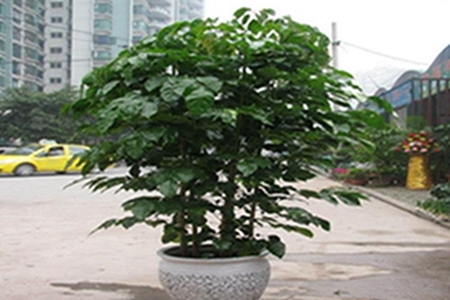
0
0







